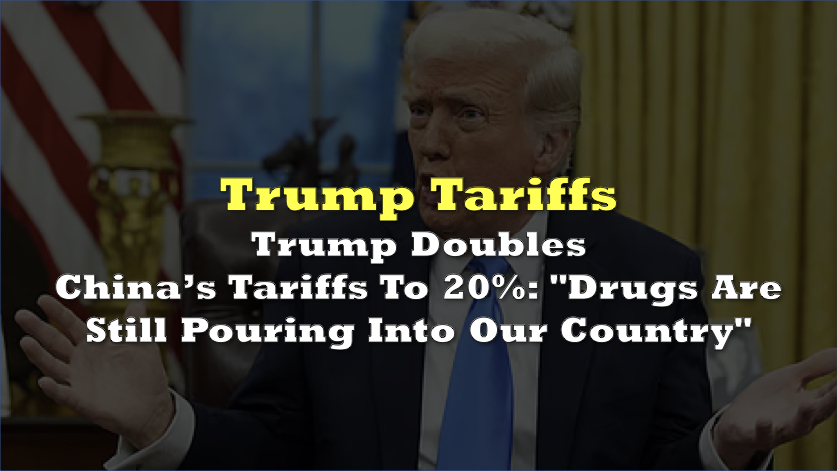Toyota And The Trump Tariffs: A Deep Dive Into The Impact

Table of Contents
The Tariffs Themselves: Understanding the Specific Measures
The Trump administration implemented several significant tariffs that directly impacted the automotive industry. These measures, intended to protect domestic manufacturers, had far-reaching consequences for global players like Toyota.
Types of Tariffs Implemented:
The tariffs imposed fell under several categories:
- Section 232 tariffs: These tariffs, levied on steel and aluminum imports, significantly increased the cost of raw materials for auto manufacturers. The 25% tariff on steel and 10% on aluminum had a ripple effect throughout the supply chain, impacting Toyota's production costs.
- Section 301 tariffs: Targeted at Chinese imports, these tariffs affected numerous auto parts and components sourced from China, disrupting Toyota's supply chain and adding to production expenses. These tariffs ranged from 10% to 25% depending on the specific product.
- Specific examples: Toyota vehicles assembled outside the US and imported into the country, as well as many imported parts used in their vehicles assembled in the US, faced these increased tariffs. This impacted models ranging from popular SUVs to smaller sedans. Specific percentages varied based on the origin and type of product.
Toyota's Response to the Increased Tariffs
Faced with increased costs due to the automotive tariffs imposed by the Trump administration, Toyota implemented several strategies to mitigate the impact on its operations and profitability.
Production Adjustments and Relocation Strategies:
To offset the negative effects of the Trump tariffs, Toyota employed several key strategies:
- Shifting production: Toyota shifted some production away from plants in tariff-affected countries to minimize import costs and maintain competitiveness. This involved careful evaluation of existing facilities and exploring potential new locations.
- Increased investment in North America: The company increased investment in its North American production facilities, aiming to produce more vehicles domestically to avoid tariffs and satisfy local demand. This represented a major shift in their global production strategy.
- Negotiation strategies: Toyota engaged in negotiations with the US government, lobbying for adjustments or exemptions to the tariffs to alleviate their impact on their business. These efforts aimed to secure more favorable terms and reduce the burden of increased import costs.
Pricing Strategies and Market Adjustments:
The increased costs resulting from the Toyota tariffs necessitated adjustments in pricing and market positioning:
- Price increases: Toyota had to pass on some of the increased costs to consumers through price increases on affected models. This risked impacting sales volume and market share.
- Changes in vehicle specifications: To avoid some tariffs, Toyota made alterations to the specifications of some vehicles, sourcing parts from different countries or modifying designs to utilize fewer tariff-affected components.
- Impact on market share: The combined effects of price increases and changes in market dynamics affected Toyota's market share in the US. Competition from other automakers, some of which had different levels of exposure to the tariffs, impacted their position in the market.
Financial Impact on Toyota: Assessing the Bottom Line
The Trump tariffs had a tangible impact on Toyota’s financial performance. While the exact quantification is complex, several key indicators illustrate the consequences.
Quantifying the Financial Losses or Gains:
While precise figures are often hard to isolate from other market factors, the impact on Toyota's financial performance was notable:
- Changes in profit margins: Increased costs from tariffs directly squeezed Toyota's profit margins, particularly on models heavily reliant on imported components. This reduction impacted their overall financial statements and investor outlook.
- Impact on investment decisions: The uncertainty created by the tariffs influenced Toyota’s investment decisions, potentially leading to delays or cancellations of certain projects. Cautious investment is a natural response to economic uncertainty.
- Stock market reaction: Announcements related to the tariffs and their potential impact on Toyota’s business often resulted in fluctuations in the company’s stock price. The volatility reflected investor concerns about the long-term effects.
Long-Term Effects on Investment and Growth:
The long-term consequences of the Trump tariffs on Toyota’s financial health are still unfolding:
- Changes in investment plans: Toyota’s long-term investment plans for future production and expansion were undoubtedly affected by the tariffs. The uncertainty fostered a more cautious approach to new investments.
- Impact on R&D spending: The need to adjust to the tariff environment and manage costs might have impacted Toyota’s research and development spending, potentially affecting future innovation and competitiveness.
- Potential long-term effects on global competitiveness: The tariffs created a less predictable and more costly international business environment, which could negatively affect Toyota’s global competitiveness in the long run.
Conclusion: The Lasting Legacy of Toyota and the Trump Tariffs
The Trump-era tariffs presented significant challenges for Toyota, forcing the company to adapt its production, pricing, and investment strategies. The increased costs associated with the "Toyota tariffs" led to decreased profit margins, impacted investment decisions, and caused fluctuations in the stock market. Understanding the complexities of "Toyota and the Trump Tariffs" is crucial for comprehending the global automotive landscape. The long-term effects, particularly on global competitiveness and investment patterns within the automotive industry, will continue to be analyzed and debated. Continue your research into the effects of trade policy on major automakers to fully grasp the implications of protectionist measures and their impact on global business.

Featured Posts
-
 Salinda And Velo In Command After Stunning 58 At Zurich Classic
May 12, 2025
Salinda And Velo In Command After Stunning 58 At Zurich Classic
May 12, 2025 -
 Bundesliga 2023 24 Relegation Confirmed For Bochum And Holstein Kiel Leipzigs Champions League Dream Shattered
May 12, 2025
Bundesliga 2023 24 Relegation Confirmed For Bochum And Holstein Kiel Leipzigs Champions League Dream Shattered
May 12, 2025 -
 Montego Bay A Jamaican Gem Worth Exploring
May 12, 2025
Montego Bay A Jamaican Gem Worth Exploring
May 12, 2025 -
 Spotting The Common Easter Egg In Multiple Adam Sandler Films
May 12, 2025
Spotting The Common Easter Egg In Multiple Adam Sandler Films
May 12, 2025 -
 9 Leading Candidates To Succeed Pope Francis
May 12, 2025
9 Leading Candidates To Succeed Pope Francis
May 12, 2025
